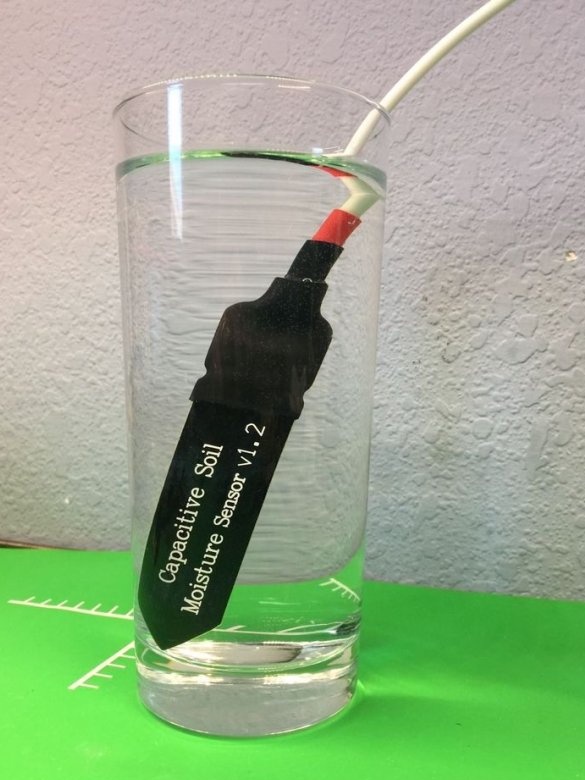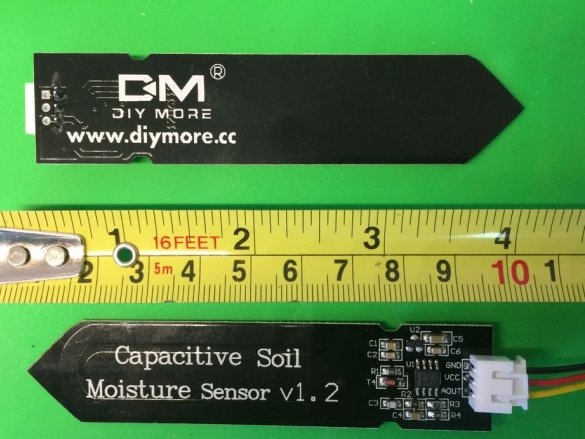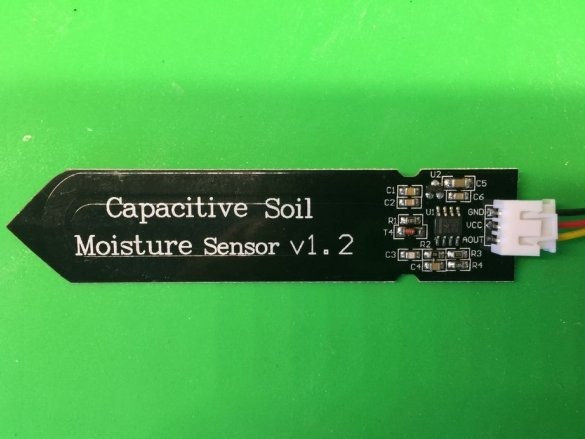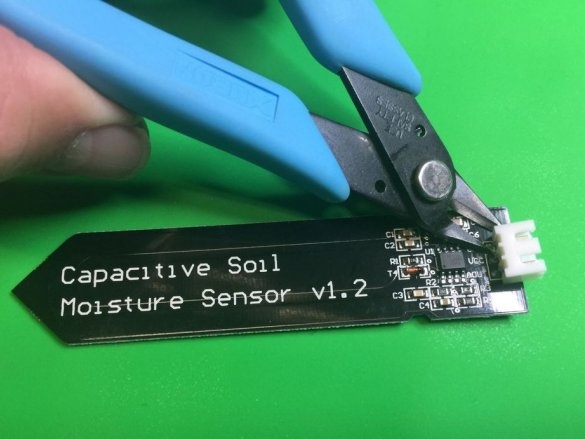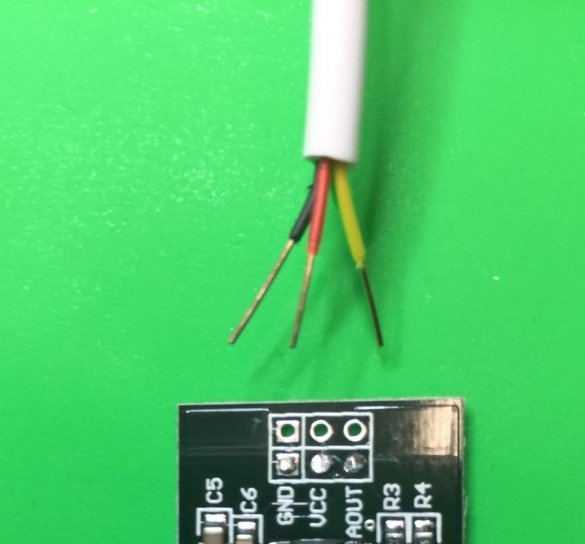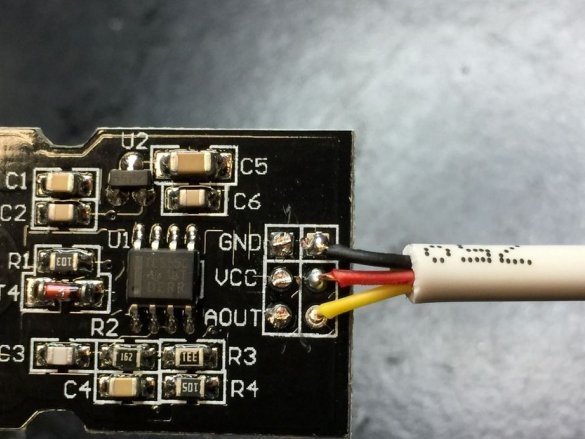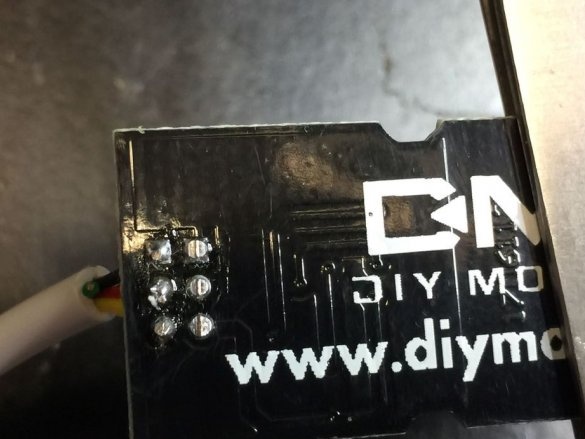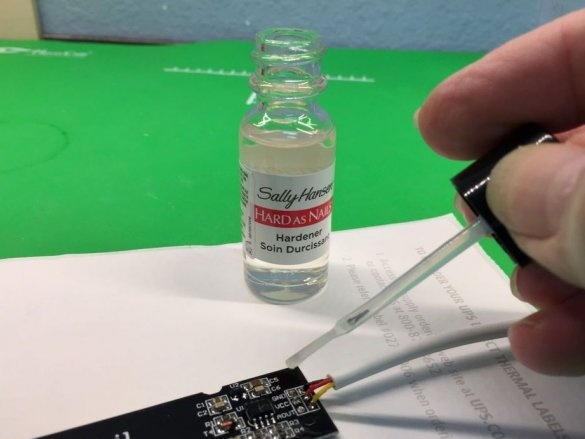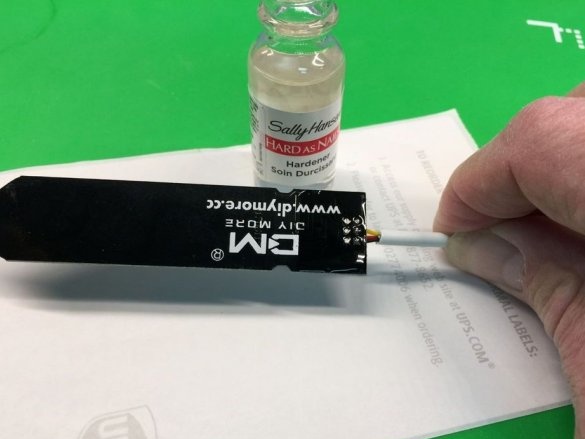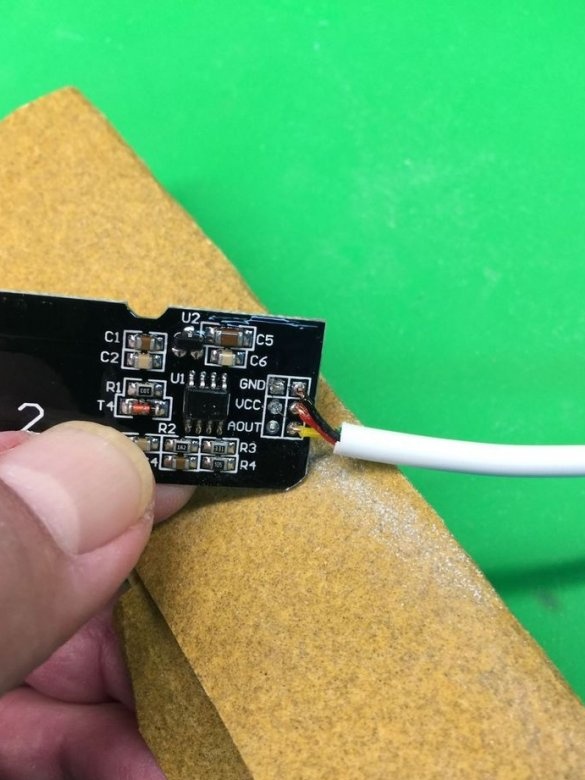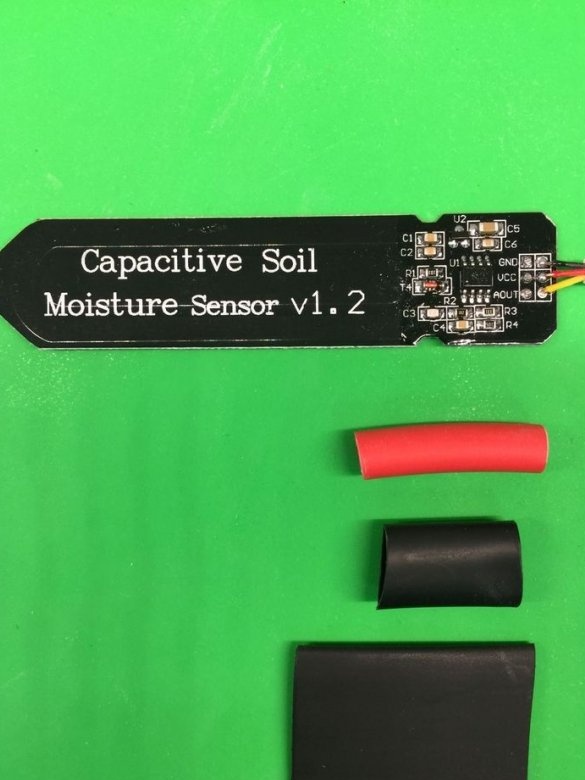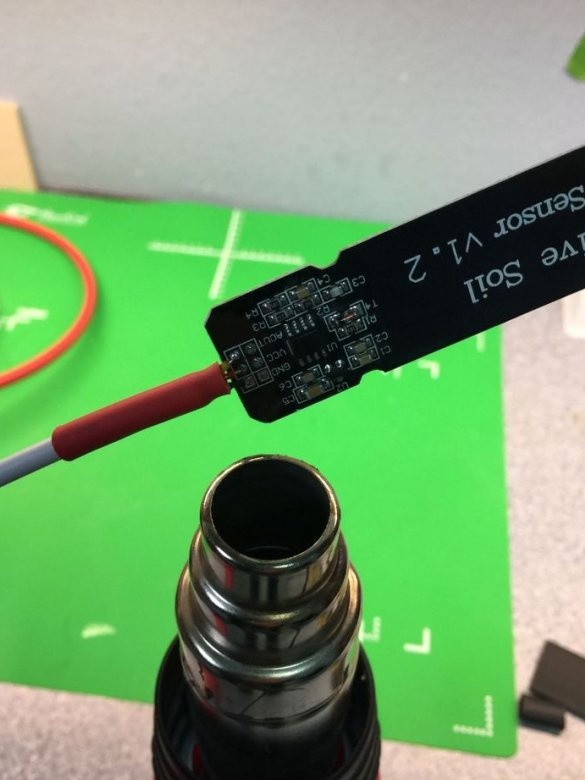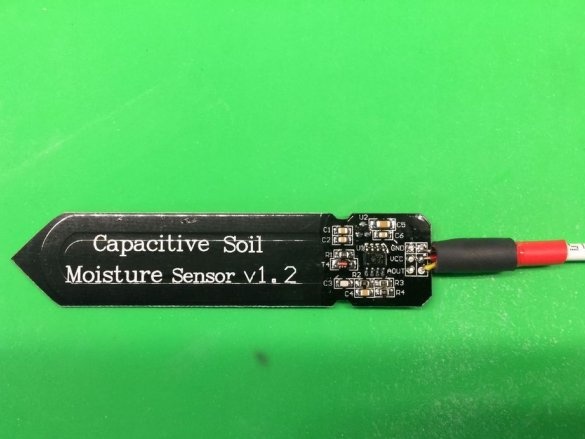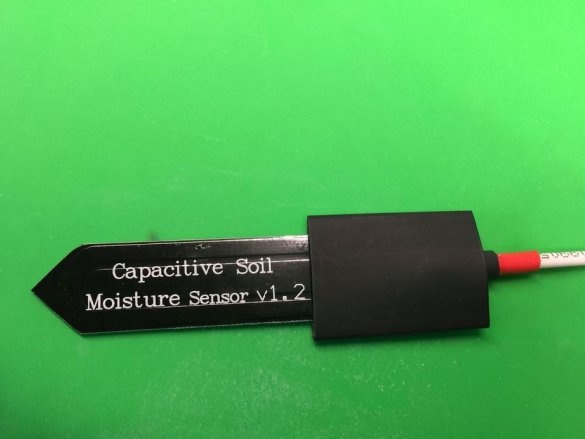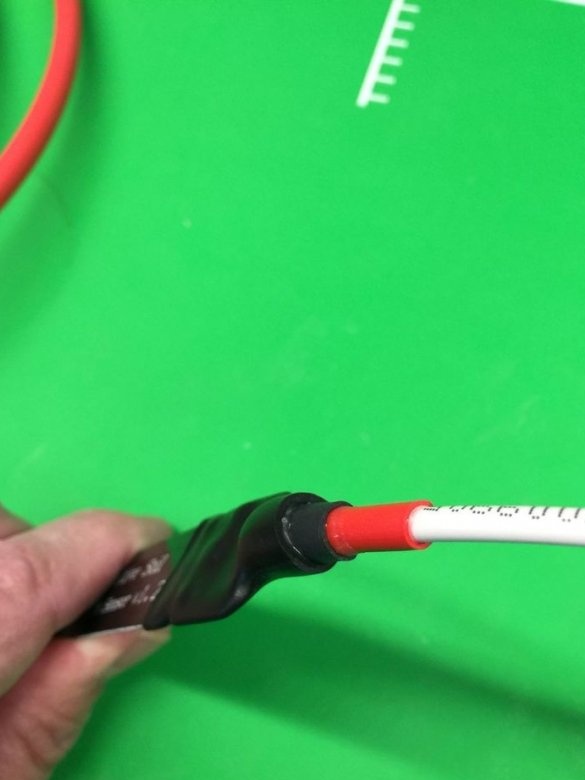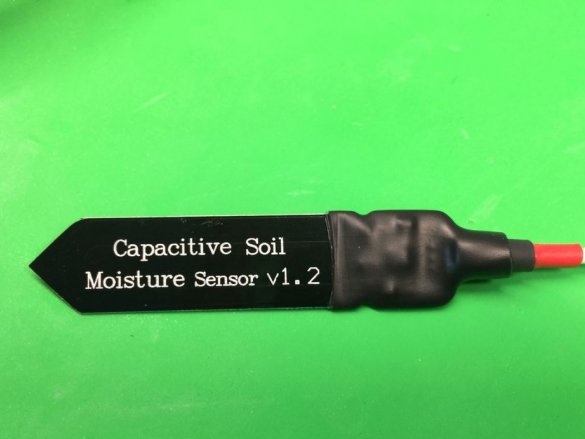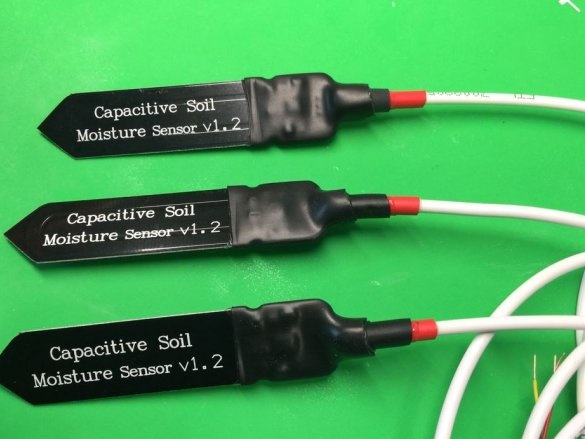Strange title, right? What kind of soil moisture sensor is this if it is not waterproof at first? It turns out that such exist. This is a pretty hot commodity in arduino shops. The board that you need to stick into the soil, and then carefully monitor so that when watering the flowers, water does not fall on the components located on top. It's ridiculous! We have to do something with this, the author of Instructables decided under the nickname micromet.
The master acquires such sensors and tests them together with Arduino. An example of a circuit and sketch that allows you to quickly check the sensor is given here.
After making sure that all purchased sensors are working, the master detaches the connectors from their boards with a knife:
Instead of the remote connectors, the master solders the cables directly to the pads on the boards. These are four-core cables in which one of the conductors is not used. The master had to bite it directly near the cutting site of the outer shell.
The master covers the components and pads on both sides of the circuit board with clear nail polish. The plates of the large capacitor formed from the printed conductors, which form the sensor itself, do not need to be covered. This will increase the thickness of the dielectric, which will distort the moisture reading. The varnish dries within half an hour.
The master removes small chamfers from the upper corners of the board with sandpaper or a file so that these corners are not sharp and can not cut through the shrink tube. Actually, this had to be done before the board was varnished. But it’s not too late to apply a little more varnish to the corners after filing. And dry again.
The master prepares three pieces of heat shrink tube, differing from each other in length and diameter:
The first two pieces of the tube, he protects the cable:
And the third - electronic components on the sensor board:
Finally, it lacquers the boundary between the tube and the board, as shown in the following photo. And it dries again.
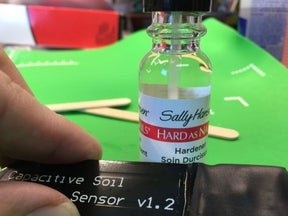
Done. Having finished all the acquired sensors in this way, the master again tests them using the above-mentioned circuits and sketch. And it works.
This is how you can refine the soil moisture sensor so that it itself becomes waterproof.Although, logically, the manufacturer itself should have done it. But that's okay. The sensor is inexpensive, so you can do it yourself to finalize.

